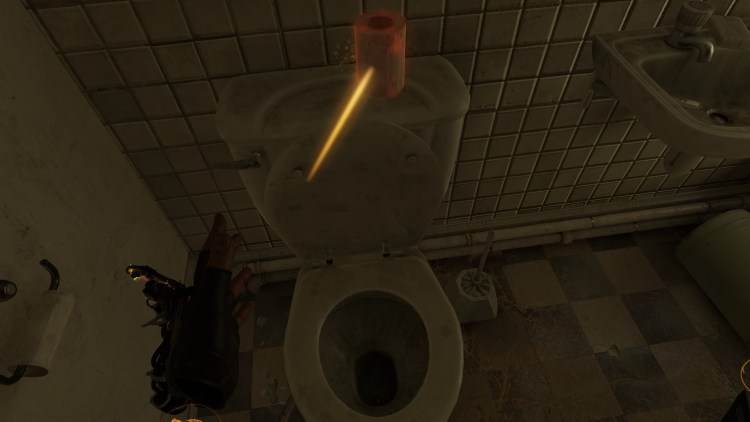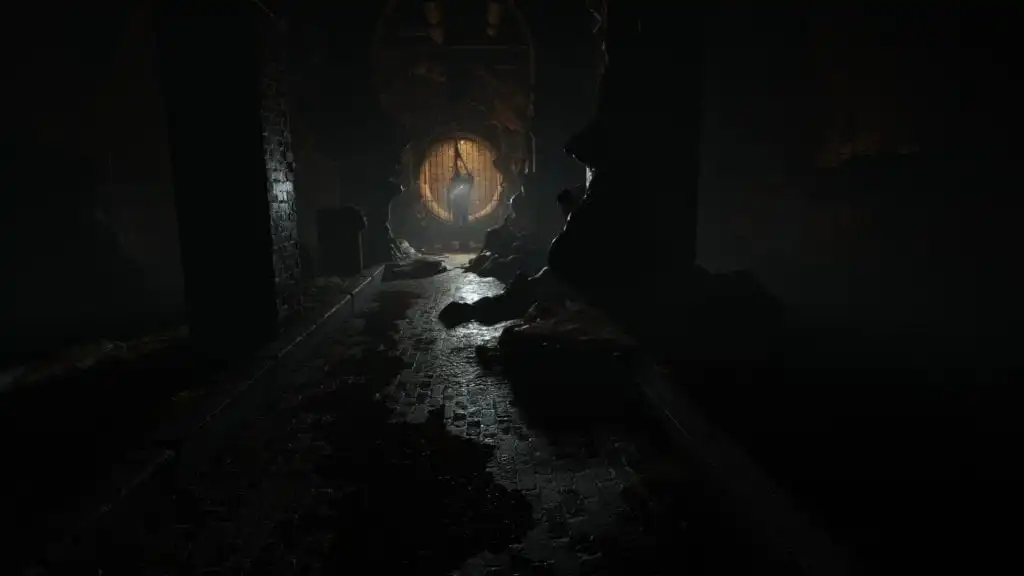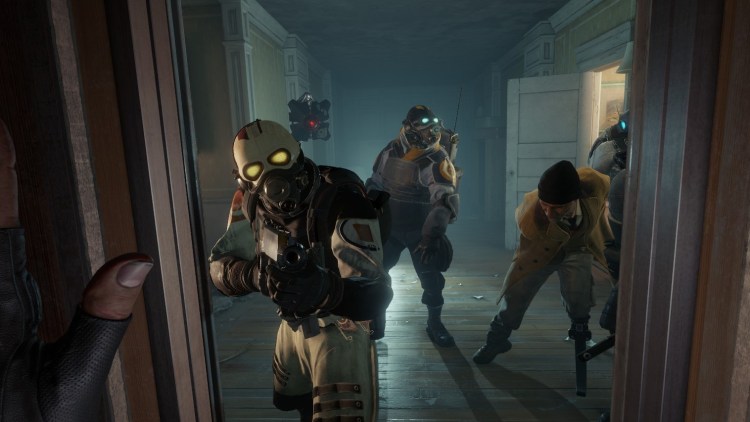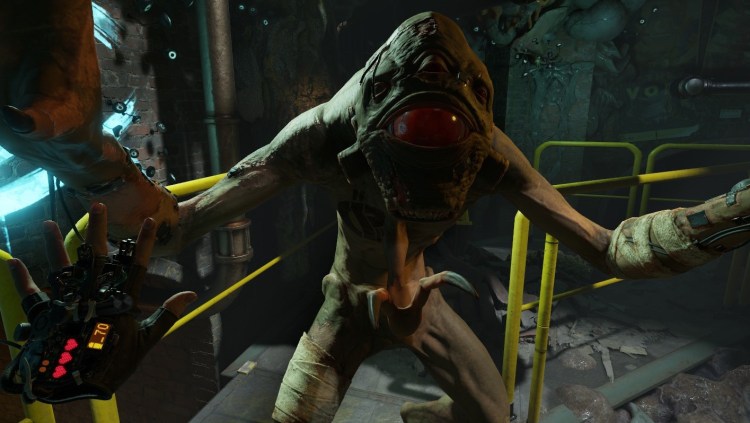Half-Life: Alyx is really something else. Something completely new, pushing the limits of technology. But it’s also something old. Half-Life established itself in the PC gaming canon just over two decades ago. Valve aims to amaze with its showcase for all its VR efforts, but also instill that warm, fuzzy feeling of the familiar.
There’s a lot of pressure on Valve to get this balance right. Previous attempts to make big immersive sim games in VR, like Apex Construct, Shadow Legend, or Boneworks, were ambitious but bumped up against technical or budgetary limitations. With the Steam creator’s money and pedigree behind it, Half-Life: Alyx doesn’t have any excuses. It’s go big or go home.
When I wrote my initial impressions article for Half-Life: Alyx, just over three-quarters through the game’s campaign, it was already clear that Valve hadn’t dropped the ball on this one. And it’s not that Alyx is a great VR game. It’s a great game, period. Even my favorite VR games are difficult to play for long sessions, but Alyx was almost unputdownable — even though we all gotta eat some time.
Technical know-wots
You don’t need a Valve Index VR kit to run Half-Life: Alyx. In fact, the game works with any SteamVR-compatible headset. If it can connect to a PC, you’re golden. For the record, I played through Alyx using the Samsung HMD Odyssey + which uses the Windows Mixed Reality platform. WMR is often seen as the neglected third child of VR after HTC Vive and Oculus. It’s the last thing to be made compatible with any game. My headset had integrated inside-out tracking cameras, no external sensors.
But I had no issues related to my platform at all. Well, one thing. The controller button that was used for some item functions was also the menu button. This led to some awkward moments where I’d pause or save the game and also accidentally prime the grenade in my hand. When I jumped back in, an already tense game was made even spicier.
Valve has done its best to make sure as many VR users as possible can play Alyx comfortably. The standard setup is ‘blink’ teleport movement and sharp turning, but these can be adjusted to smoother motion following your head or your hand. There’s even a single controller mode and the option to toggle whether the barnacle tongue lifts you up or not. If you have a tendency to feel nauseous in VR, then blinking is the way to go. It could be an unfair advantage in combat, but needing to quickly re-orientate yourself makes up for it.
Enter the matrix
Half-Life: Alyx’s graphics are amazing, and I don’t say that lightly. My GTX 1080 Ti was able to run the game on high settings, and Alyx seemed almost insecure about it as it nagged me to turn them down. But this was unnecessary modesty; everything ran like a dream. Your mileage may vary on visual quality, although Alyx‘s Steam reviews and discussions have users remarking that the game looks unexpectedly good on lower-range hardware.
Even using behind-current generation hardware, Half-Life: Alyx‘s visuals are gorgeous, bordering on photorealistic. The attention to detail is ridiculous. Valve aims to dazzle you with this right from the beginning — the starting area is basically a visual showcase. Whether looking out over City 17 from a balcony to messing around with beer bottles, notepads, and other objects, everything is meticulously designed.
I’ve spent a fair amount of real life in run-down eastern European apartments, metro stations and hotels, and Valve really nailed it. The realism of City 17’s ‘normal’ environments is one thing. Then you have the otherworldly fungoid growths of the Xen, simultaneously disgusting and fascinating. And the biomechanical technology of the Combine, all looming obelisks, spindly limbs, and imposing hydraulics.
The aesthetic blend of realism, organic grossness, and cool sci-fi is 100% Half-Life and wonderfully realized. You’ll recoil at pulsating tendrils or poke around with weird machines. The introduction has a few physics interactions that are cool but don’t really feature in the rest of the game. Valve is just showing off. I don’t need to open a book or insert a floppy disk into a PC. But I want to. Occasionally corpses twitch like an amateur actor playing dead, or things bounce in weird ways. You don’t do much climbing or complicated platforming, for which I am very, very grateful.
Meeting Miss Vance
Half-Life veterans will remember Alyx Vance from the second game in the series. Unusually for a VR protagonist (and for a Half-Life protagonist, too), she is voiced. But I never found this intrusive, and the radio banter between her and the affably sociopathic inventor Russell adds some welcome comic relief to the generally intense atmosphere of the game. You’ll only ever see Alyx’s hands, and they are wonderfully detailed down to the dirty fingernails.
Alyx is a 19-year-old who came of age during the Combine occupation of Earth, although at times her naive nature seems laid on a bit too thick. In one area, she doesn’t know what vodka is, despite living in a city where people keep it in their homes and office and having found plenty of it in previous areas. But there’s no role-playing here. Alyx’s character provides motivation: she wants to rescue her father from the Combine. It’s simple, unobtrusive, and doesn’t get in the way of you being you.
I won’t spoil the story, but the game has plenty of nice Easter eggs and references to the series. It’s keener to tantalize future possibilities than explain existing mysteries. Fans of Half-Life lore who wanted to clear up the franchise’s big mysteries still have to wait.
Handy-dandy
The distinctive gravity gloves are a key gimmick in Half-Life: Alyx. The iconic gravity gun taken to the next level, they basically give you Jedi force powers to pull and throw objects at a distance. They’re a lot of fun to play around with and Valve comes up with some inventive puzzles involving the ability. I felt like a total badass once I was good enough to snatch grenades out of the air or pull a healing item off a Combine trooper to inject yourself mid-battle.
You only get three guns over the course of the game but they can all be upgraded. Not only does this make them more effective, but every addon is physically represented.

Half-Life: Alyx released just in time for the real world to run out of toilet paper. This wouldn’t have happened on the Combine’s watch.
The physicality of weapons is part of the survival horror aspect of the game. Manually reloading your guns, emptying and replacing clips, etc., isn’t easy when enemies are swarming around you. I full-on panicked several times, dropping ammo or firing blind when I was trying to reload while monsters were attempting to eat me and I could hear the telltale beep of a Combine grenade near me somewhere. Still, once you have a fully upgraded weapon and a handle on your gravity gloves, it is very satisfying to get the jump on the enemy.
When all you have is a multi-tool
It wouldn’t be Half-Life without puzzles. Of course, levels are full of force fields, locked doors and broken machinery. Even the upgrade containers require you to complete a holographic 3D puzzle to unlock them. Generally, puzzles are well done and require you to use your noggin as well as your hands. You may not play a brilliant scientist in Alyx, but you will feel like a smarty-pants by the end of it. Towards the very end, some of the hand-eye coordination puzzles begun to feel tiresome, especially the ones where you have to trace wires around the level with your multi-tool.
The hacking mini-games were the only thing about Alyx that I didn’t want more of by the end. At first, they were a fun challenge and cool to look at. But in later stages, I felt like they just got in the way of the good stuff. Thankfully, the good stuff is really, really, good.
It’s a wonderful Half-Life
In the previous article, I mentioned the key elements of Half-Life: Alyx that made it feel an authentic title in the series. That being wonder, terror, and action with a generous dose of black humor. Like previous games in the franchise, the chapters are linear but continuous except for the occasional loading screen. Alyx‘s set-pieces cycle between relatively peaceful A-to-B exploration where you can take in the scenery (wonder), dark and claustrophobic areas with horrific enemies in wait (terror), and tense firefights (action). The music scoring and audio is fantastic throughout, whether it’s the ambient pulse and squelch of Xen overgrowth or industrial crank and grind.
The horror elements of Half-Life are turned up to 11 in VR. It’s a genuine shock the first times you have to pull a headcrab off your face. Or get caught by a barnacle in the dark. Alyx has a nerve-wracking level where you have to work in close quarters around a blind fungus monster with keen hearing. The damn thing even puffs out spores that can cause you to cough, giving away your position.
You can distract this monster by throwing bottles to create noise. I loved this, but it also reminded me that I’d tried to do this for many previous enemies, and none of them cared at all. Similarly, while you can throw objects around and use them for cover, other physical interactions were inconsistent or underwhelming. Picking up a brick or pipe and swinging it at an enemy rarely does anything except get you killed. Even in a game as accomplished as Alyx, there are limits to immersion.
A new standard
Probably the highest praise I can give Half-life: Alyx is that it feels as significant as it was meant to be. It harkens back to the days of the earlier Half-Life titles, when PC gaming was advancing rapidly, and hyped games were showcases for new possibilities in virtual worlds — be it immersion, physics, graphics, mechanics, etc. There are a lot of great new games being made every year, but very few that could be said to have really pushed the boundaries of what’s already available.
Half-life: Alyx does this. There’s nothing else quite like it right now. We can only hope that the new standard set by Valve and the increased interest in VR that Alyx generates will inspire similarly deep-pocketed industry giants to up their game. There’s no denying that the financial barrier to entry for Half-Life: Alyx remains high. Still, if you can clear it, there’s really something special here.












Published: Mar 24, 2020 04:15 pm